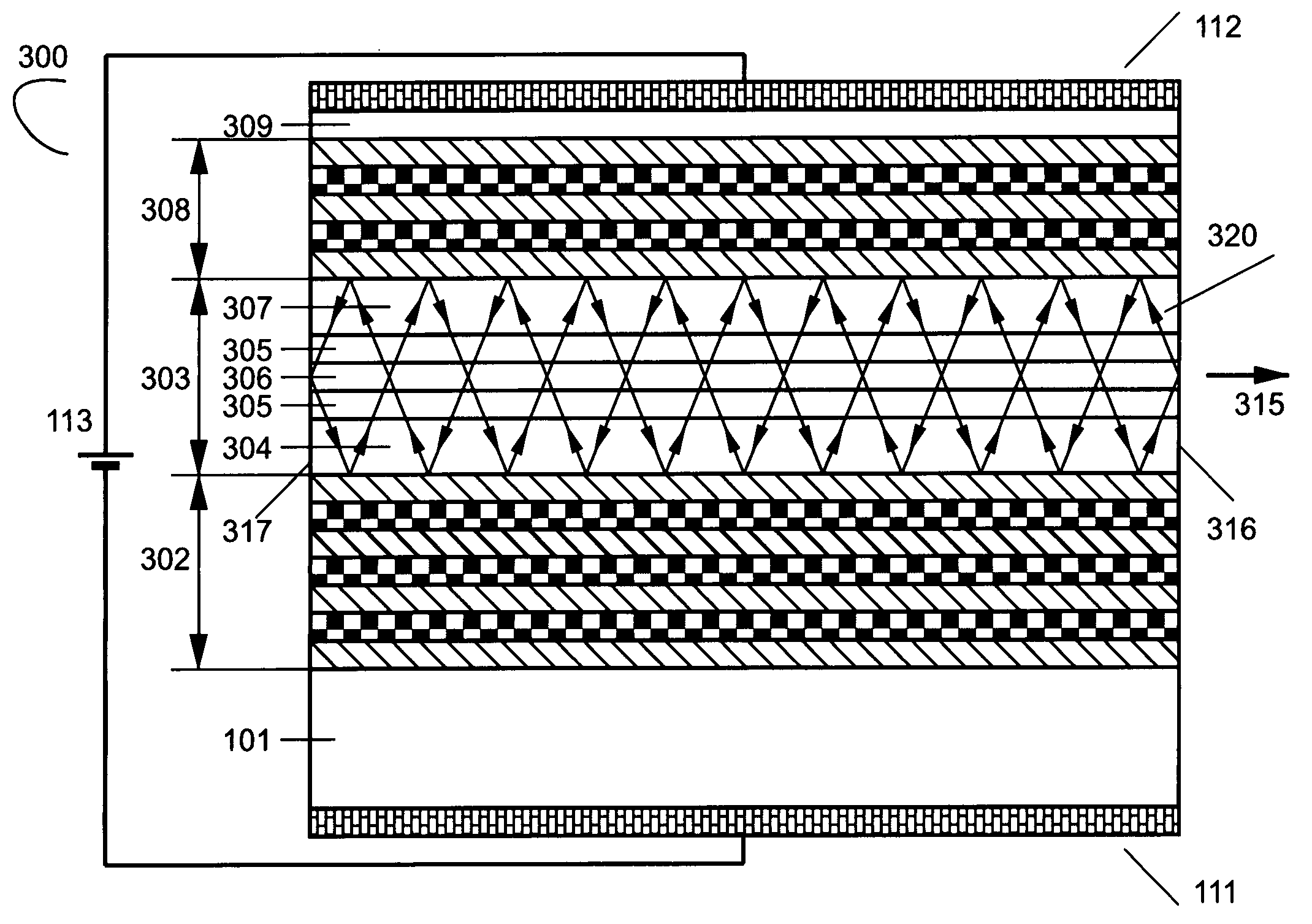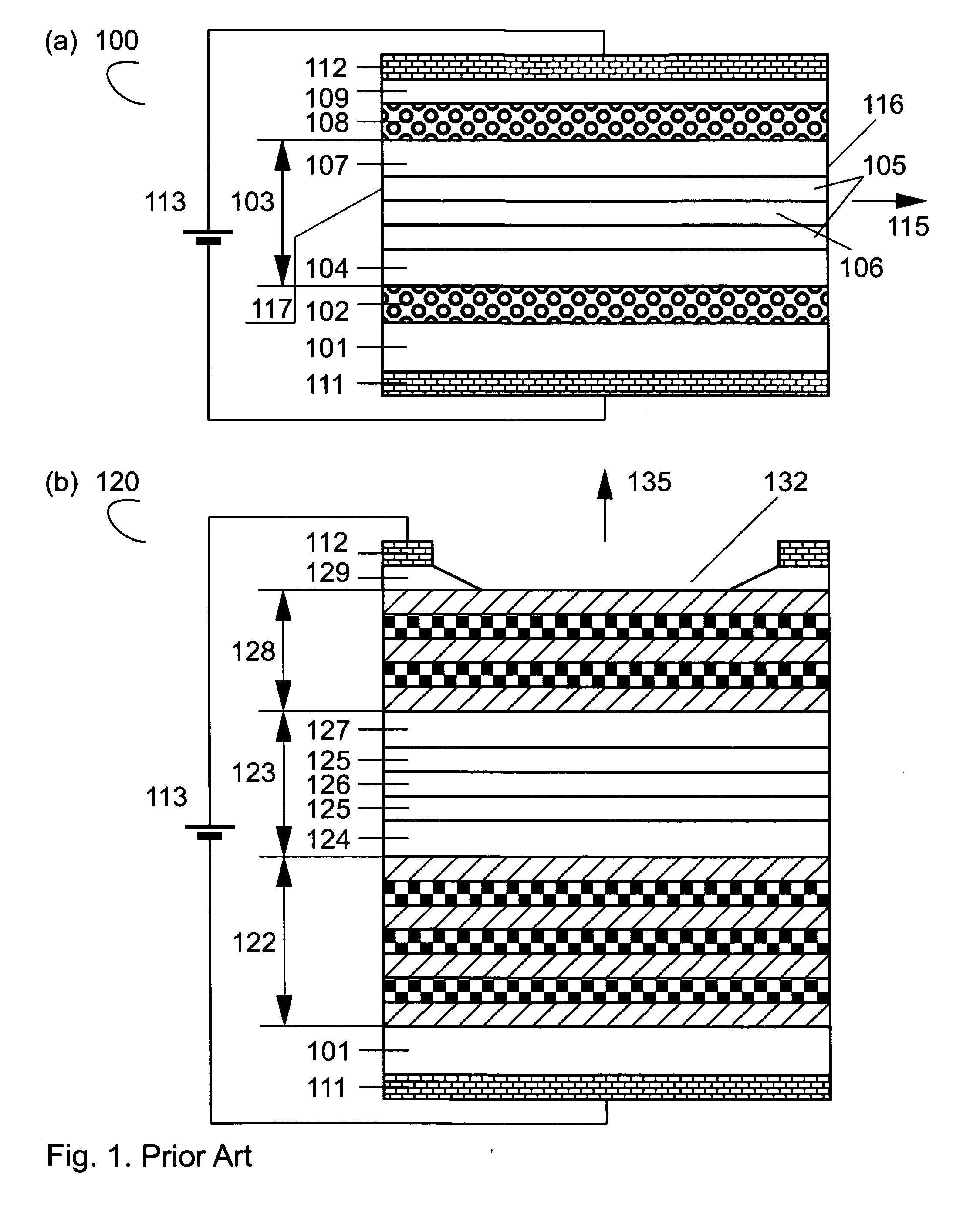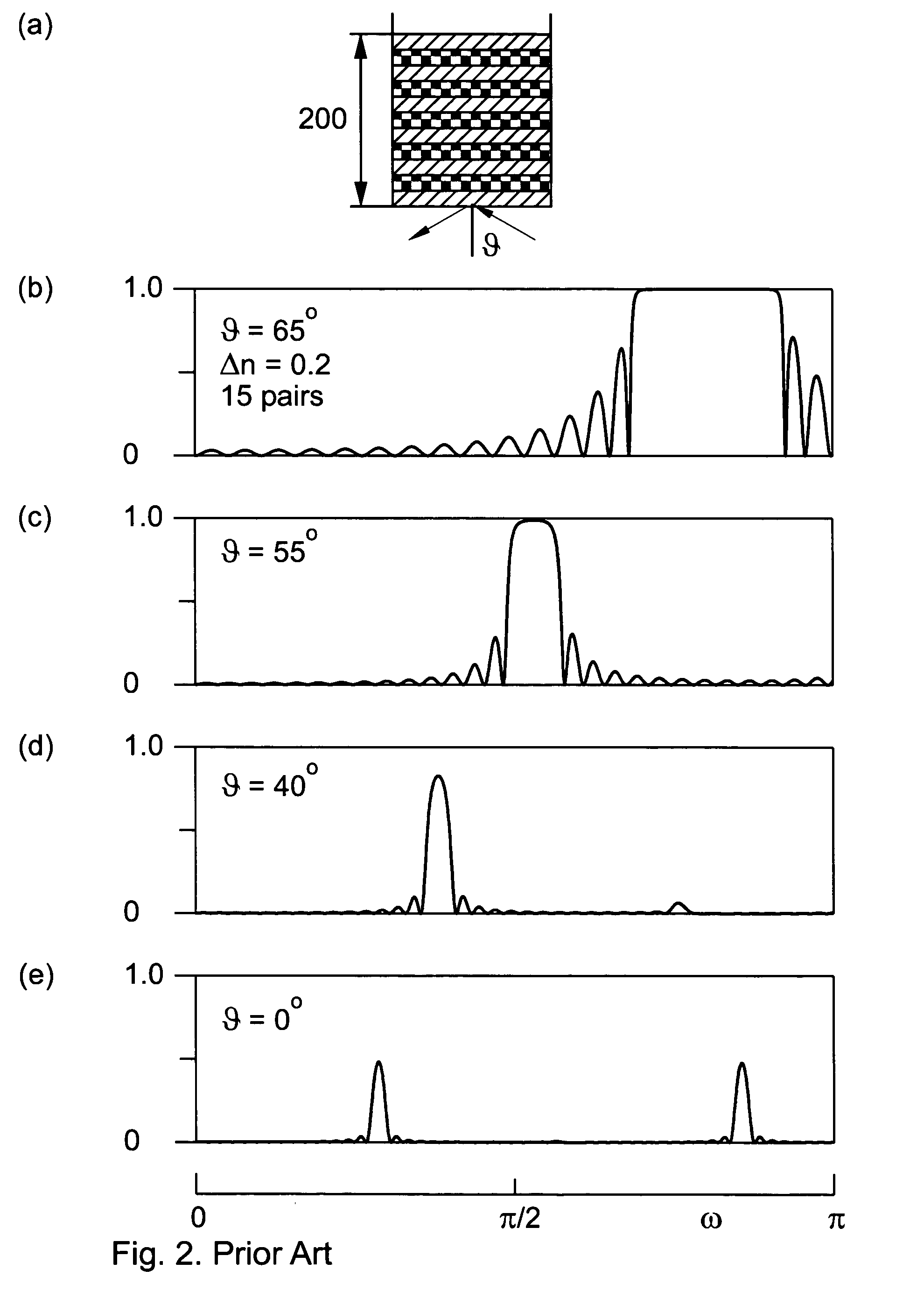Optoelectronic device and method of making same
- Summary
- Abstract
- Description
- Claims
- Application Information
AI Technical Summary
Benefits of technology
Problems solved by technology
Method used
Image
Examples
first embodiment
[0107]FIG. 11(a) shows an apparatus (1000), according to the present invention, the apparatus comprising a light-emitting device (1010), an external cavity (1030), and one or a plurality of external mirrors. Since the light-emitting device emits light at some angle with respect to the direction (1005) normal to the surface plane, the far-field diagram is typically multi-lobe. Correspondingly, more than one external mirror is used. A preferred embodiment includes a light-emitting device emitting light in two lobes, an external cavity, and two external mirrors, a first mirror (1014) and a second mirror (1024). In this embodiment distance between the exit surface of the light-emitting device (1010) and the mirrors is large, and the major part of the cavity (1030) is a far-field zone of the light-emitting device (1010), where propagation of light obeys the laws of the geometrical optics. Light emitted at angles such that it does not impinge on the mirrors, is lost. Only light emitted a...
second embodiment
[0109]FIG. 11(b) shows the present invention, where the apparatus (1050) contains a second mirror (1074) as a flat mirror, and a collecting lens (1056) is used to focus light onto the mirror or onto the surface of the surface-emitting device. Wavelength-stabilized laser light (1065) comes out through a semi-transparent collecting mirror (1014). In another embodiment of the present invention, a semi-transparent mirror is flat, and a collecting lens is located between this mirror and the surface-emitting device. In one another embodiment, both mirrors are flat, and collecting lenses are placed on both sides of the surface-emitting device.
[0110]It is important to emphasize a dramatic difference between the wavelength-selective tilted cavity laser of the prior art and the wavelength selective laser of the present invention. In a tilted cavity laser, the wavelength selection is governed by the intersection of the dispersion law of a cavity and of that of a MIR. The dispersion law of the ...
third embodiment
[0112]FIG. 11(c) shows an apparatus for frequency conversion (1100) according to the present invention. A non-linear crystal is located within the cavity. The apparatus comprising a light-emitting device (1010), an external cavity (1030), a first mirror (1114), and a second non-transparent mirror (1074) generates wavelength-stabilized primary laser light. The optical path of the laser light at the first harmonic goes through a non-linear crystal (1110), where a second harmonic of light is generated. All mirrors are preferably non-transparent for the primary light. One mirror (1114) is preferably semi-transparent for the generated second harmonic of light. Laser light at second harmonic (1115) comes out through the mirror (1114).
[0113]It should be noted that the optical path of light is tilted with respect to the surface of the light-emitting device. An advantage of this approach, among others, is that the optical power in the nonlinear crystal is enhanced by the factor 1 / cos , and t...
PUM
 Login to View More
Login to View More Abstract
Description
Claims
Application Information
 Login to View More
Login to View More - R&D
- Intellectual Property
- Life Sciences
- Materials
- Tech Scout
- Unparalleled Data Quality
- Higher Quality Content
- 60% Fewer Hallucinations
Browse by: Latest US Patents, China's latest patents, Technical Efficacy Thesaurus, Application Domain, Technology Topic, Popular Technical Reports.
© 2025 PatSnap. All rights reserved.Legal|Privacy policy|Modern Slavery Act Transparency Statement|Sitemap|About US| Contact US: help@patsnap.com



